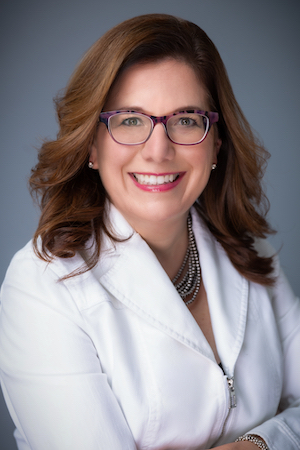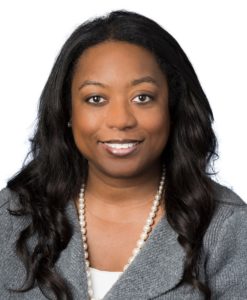By Amy Shabacker Dufrane
February is Black History Month, which is officially recognized by governments in the U.S. and Canada and observed in Ireland and the U.K. It focuses our attention on the contributions of Black people as well as teaches us about noteworthy individuals who have helped shape and change our society. The last few years have been particularly historic, and to help us understand the magnitude of the diversity and inclusion topic, I’ve turned to Dr. Denise Caleb, president of the Human Resource Standards Institute (HRSI), an HRCI company.
Denise, awareness of the Black diaspora has intensified over the past few years. Do you think employers have made strides in reducing discrimination?
That is a loaded question because it depends on the industry and the organization that is being evaluated. And the measure of discrimination itself is a complex question, which can be difficult to evaluate.
If we were to review the measures organizations have put in place that align with the international standards of diversity and inclusion and represent alignment with the HR Standards of ISO 30415:2021 Diversity and Inclusion, measured by The Human Resource Standards Institute (HRSI), we can start to have an objective and consistent way to measure if D&I is increasing, and in turn impacting the reduction of discrimination in the workplace.
There are several organizations that had a high commitment to diversity, inclusion, equity, equality, and justice prior to what some would call the perfect storm of civil unrest based on the murder of George Floyd and the COVID-19 pandemic. Many organizations already had a high level of understanding of what it means to build a workforce and workplace committed to DEIB. These organizations demonstrate the impact of their DEIB — showing up in their financials, human capital, and the communities in which they serve. I would commend and have been impressed by organizations, such as McDonald’s Corporation, Delta Dental of Virginia, Adobe, Silk Relo, Nike, Asian Tigers, Graebel Companies, and Microsoft, based on a variety of D&I measurements both before and after the murder of George Floyd, which has now become a pivotal milestone measure towards D&I progress. Each of the mentioned organizations has robust transparent programs, some with multi-year goals and plans striving to impact their markets and build true representation at all levels of their organizations.
I share your admiration for these organizations as well. What about on an individual employee experience level? Can you give us some examples of racial discrimination?
Unfortunately, racial discrimination does exist at work. As HR professionals we play such a critical role in how this is overcome within the work environment. The goal is for workplaces to establish outlets where employees can voice their concerns, experiences, examples, and facts and be taken seriously when they experience discriminatory threats. But what often continues to happen is those who are at the hands and subjects of discrimination are often not believed, are not taken seriously, or must over-explain to justify their concerns or have a recording of the discrimination as proof to be heard and believed. Discrimination shows up in many shapes and forms, often looking and varying from subtle to blatant.
It can look as subtle as:
- Asking Black women if they would consider straightening their hair for the annual photo shoot so everyone has a professional headshot, suggesting the ethnic texture of their hairstyle is not professional.
- Telling a Black woman that she is coming off as aggressive or angry versus allowing the employee to speak with passion and command, thus creating a work environment that is free of stereotyping employees with biases.
To as Blatant as:
- Being asked to speak more “traditional,” meaning the employee needs to sound white versus sounding so ethnic or having such a heavy Black accent, meaning a person needs to sound a little less “blackish.”
- Favoring the promotion of a white male candidate over a Black female candidate to an executive-level role, based on the opinion that everyone will feel more at ease and safe with a white candidate in power.
Although uncomfortable to read these types of examples in print, the sad truth is that all these examples are real and actual experiences faced by Black employees – and continue to face daily.
What can be done to ensure an inclusive work environment for Black employees?
The complexities of the work environment for Black employees have a long and intricate history. Here are some of the basics for creating inclusivity for Black employees:
- Create psychologically safe work environments where raising concerns of discrimination allows those employees to be heard and taken seriously.
- Create a diverse environment where Black employees can see themselves reflected at all levels of the organization from the board, executive level, director, management and front line.
- Truly recognize that Black employees are living a dissimilar experience than non-black employees and need different support systems in place, especially when in leadership roles.
- Know and understand that the “Glass Cliff” for Black women executives is real. These executives need to be promoted with the appropriate resources and support in place.
- Have zero tolerance for racial discrimination, microaggressions, and known & expressed biases.
- Take time, not only during Black History Month but throughout the year to be an ally versus a bystander.
Denise, as HR and business leaders, what’s our role?
When it comes to creating an inclusive work climate, it is key for leaders to provide platforms and avenues for employees to arrive at work as their authentic selves. And when employees do show up as they were told they could, under the promise that the organization believes in and practices inclusivity, equity, and equality, these employees should not be penalized, demonized, or threatened. Organizations cannot call for and open the door for authenticity and then turn around and weaponize the employee’s true self against the employee.
At the end of the day, we all need to start somewhere to make progress happen and to make an impact. Sometimes it can be overwhelming to think, as an individual, what can I do to best support the Black Community? Often, we need to keep it as simple as being an advocate, meaning if we See Something, Say Something, Do Something!
Thank you, Denise. Progress is being made, but for it to be sustainable, the measurement of D&I needs to be objective. The work you and your team are doing at the HRSI, specifically the D&I Organizational Certification, is a durable foundation for measuring processes, practices, and outcomes.

